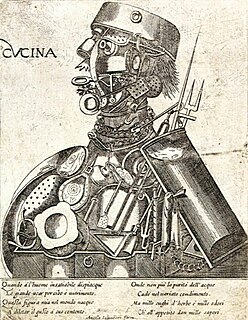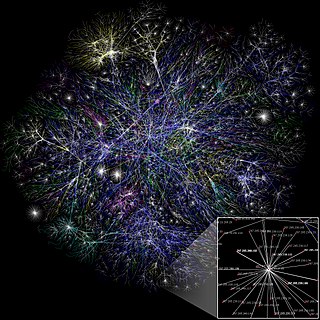 W
WThe Information Age is a historical period that began in the mid-20th century, characterized by a rapid epochal shift from the traditional industry established by the Industrial Revolution to an economy primarily based upon information technology. The onset of the Information Age can be associated with the development of transistor technology.
 W
WAttention economics is an approach to the management of information that treats human attention as a scarce commodity and applies economic theory to solve various information management problems. According to Matthew Crawford, "Attention is a resource—a person has only so much of it."
 W
WCyberspace is a concept describing a widespread interconnected digital technology. "The expression dates back from the first decade of the diffusion of the internet. It refers to the online world as a world 'apart', as distinct from everyday reality. In cyberspace people can hide behind fake identities, as in the famous The New Yorker cartoon." The term entered popular culture from science fiction and the arts but is now used by technology strategists, security professionals, government, military and industry leaders and entrepreneurs to describe the domain of the global technology environment, commonly defined as standing for the global network of interdependent information technology infrastructures, telecommunications networks and computer processing systems. Others consider cyberspace to be just a national environment in which communication over computer networks occurs. The word became popular in the 1990s when the use of the Internet, networking, and digital communication were all growing dramatically; the term cyberspace was able to represent the many new ideas and phenomena that were emerging.
 W
WThe Digital Revolution is the shift from mechanical and analogue electronic technology to digital electronics which began in the latter half of the 20th century, with the adoption and proliferation of digital computers and digital record-keeping, that continues to the present day. Implicitly, the term also refers to the sweeping changes brought about by digital computing and communication technologies during this period. From analogous to the Agricultural Revolution and Industrial Revolution, the Digital Revolution marked the beginning of the Information Age.
 W
WDigitality is used to mean the condition of living in a digital culture, derived from Nicholas Negroponte's book Being Digital in analogy with modernity and post-modernity.
 W
WLibrary 2.0 is a loosely defined model for a modernized form of library service that reflects a transition within the library world in the way that services are delivered to users. The focus is on user-centered change and participation in the creation of content and community. The concept of Library 2.0 borrows from that of Business 2.0 and Web 2.0 and follows some of the same underlying philosophies. This includes online services like the use of OPAC systems and an increased flow of information from the user back to the library.
 W
WIn computing, a news aggregator, also termed a feed aggregator, feed reader, news reader, RSS reader or simply an aggregator, is client software or a web application that aggregates syndicated web content such as online newspapers, blogs, podcasts, and video blogs (vlogs) in one location for easy viewing. The updates distributed may include journal tables of contents, podcasts, videos, and news items.
 W
WOniritti Höhlenbilder is a 2016 book by the German writer Botho Strauß. It consists of fragmentary scenes and dreamlike imagery, with a focus on problems related to a lack of privacy and imagination in the digital age. "Oniritti" is a combination of the Greek word "oneiros", meaning "dream", and "graffiti".
 W
WThe Third Wave is a 1980 book by Alvin Toffler. It is the sequel to Future Shock (1970), and the second in what was originally likely meant to be a trilogy that was continued with Powershift: Knowledge, Wealth and Violence at the Edge of the 21st Century in 1990. A new addition, Revolutionary Wealth, was published, however, in 2006 and may be considered as a major expansion of The Third Wave.
 W
WThe Virtual Revolution was a British television documentary series and interactive web experience presented by Aleks Krotoski, which began airing on BBC Two on 30 January 2010. A co-production between the BBC and the Open University, the series looks at the impact the World Wide Web has had since its inception 20 years ago. The series took a different approach to BBC documentary making by encouraging an open and collaborative production.
 W
WThe World Wide Web (WWW), commonly known as the Web, is an information system where documents and other web resources are identified by Uniform Resource Locators, which may be interlinked by hyperlinks, and are accessible over the Internet. The resources of the Web are transferred via the Hypertext Transfer Protocol (HTTP), may be accessed by users by a software application called a web browser, and are published by a software application called a web server. The World Wide Web is not synonymous with the Internet, which pre-dated the Web in some form by over two decades and upon the technologies of which the Web is built.